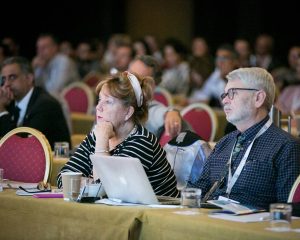It was a great honour to be invited by my friend and colleague Dr Simon Chard in his role as scientific chairman of the British Academy of Cosmetic Dentistry Congress 2019 to speak on the topic of treatment planning in a litigious world at this year’s meeting.
When first asked to present at the conference on this topic, I thought long and hard about the best way to present. I could do a textbook lecture on diagnostics – boring. I could present multiple cases and rapidly go over the treatment planning – but which cases to choose? Single tooth? Full mouth? And how do you really get into the detail for any given case?
It so happened that I had been separately videoing the treatment planning process for a teaching exercise together with the team at Dentinal Tubules and JSP media group. We had created a video that showed the entire treatment planning process in real time for a random patient that had attended the practice that week as a demonstration of the steps that we took and the detail that we went into. However it was a bit touch and go as to whether the whole video could be edited in time for the presentation!
I therefore prepared two lectures – one reliant on this video being prepared in time whilst hiding the patient’s face and salient details for the purposes of anonymity, and one conventional lecture just in case it was not ready on time. With great thanks to Jemish Patel and his team at JSP Media Group who stayed up until past midnight to render the final video and upload it for me, I was able to utilise both.
Having discussed it with my friend Dr Nik Sisodia would be moderating me for the afternoon, he felt that running the video in real-time would actually be a novel approach that people may not have seen before. So that’s what we did.
Having set the scene, I highlighted the fact that many dental surgeons were getting into trouble due to the fact that they had not spent sufficient time to collect and analyse information and to be able to give their patients sufficient detail for them to make informed consent choices. Whilst the dentistry was often fine, it was the consent process that brought them in front of the General Dental Council. The current fitness to practice hearings are replete with multiple cases of clinicians being accused of inadequate, insufficient, inappropriate, unsuitable and a variety of other terms when it came to information collection, analysis and communication to the patient. Worst of all, they were often also accused of dishonesty by the very fact that they had ended up in the crosshairs of the fitness to practice committee.
The objective of the lecture was to show the painstaking detail that was required in the collection of information from the patient, how it is documented and how it is then utilised to analyse, diagnose and communicate in real-time. It is often the case that lecturers can lose the audience by playing video. However the fact that this was in real-time did seem to strike a chord with much of the audience, especially the younger members of our profession for whom the need for such detailed planning may not be immediately obvious.
Whilst there were some that said it was unrealis
I hope that the message I managed to convey was that for every hour of dentistry there is close to an hour of information collection, analysis, diagnosis, planning, communication correspondence, question and answers, and an ongoing consent process throughout treatment for the patient to be fully informed to the standards that are expected of today’s profession.
We omit this vital step of treatment planning in a litigious world at our peril. However, dental surgeons are not remunerated for thinking and planning time. It is necessary for our profession to spend a vast amount of personal time away from our friends and families and hobbies outside work to work on this aspect of patient care that is not seen by our patients nor indeed our own staff in most instances.
If the entire profession starts to value the time they spend thinking and communicating in the same way that they value their time placing implants or carrying out crown preparations or doing composite resin restorations, only then can we give our patients the time that we owe them to give them the best advice. But must also get across the message that our patients owe us for the time we give them to think and advise on their cases and start valuing our knowledge rather than just our clinical ability.
I would like to thank Dr Simon Chard and the British Academy of Cosmetic Dentistry for the kind invitation, to Dr Nik Sisodia for his expert moderating and support, to Jemish Patel and Tim Ifans at JSP Media Group for the immense support and last minute hard work above and beyond the call of duty and finally to acknowledge Reza Kio for providing me with high-resolution photographs of my presentation day.


